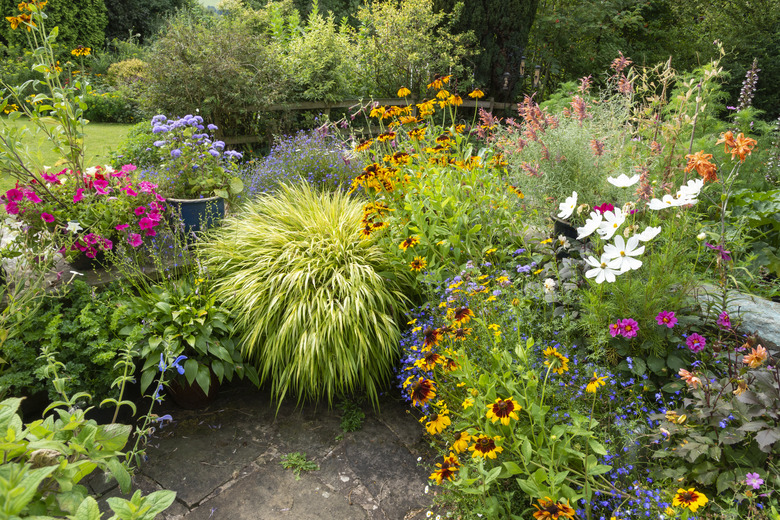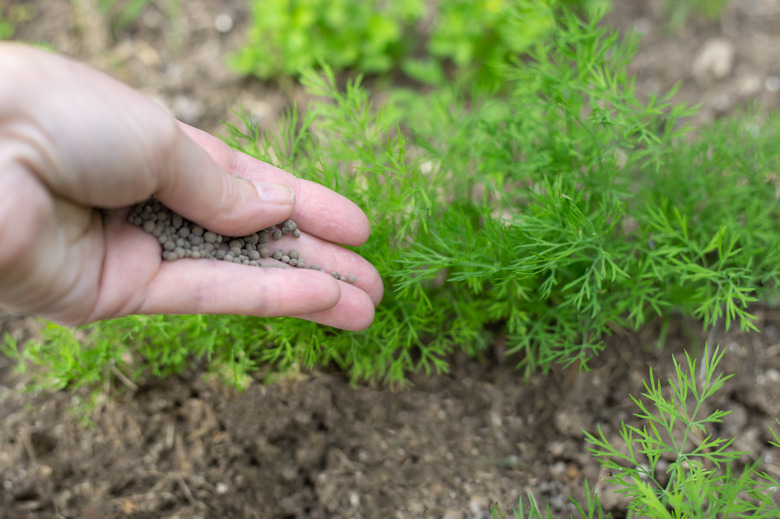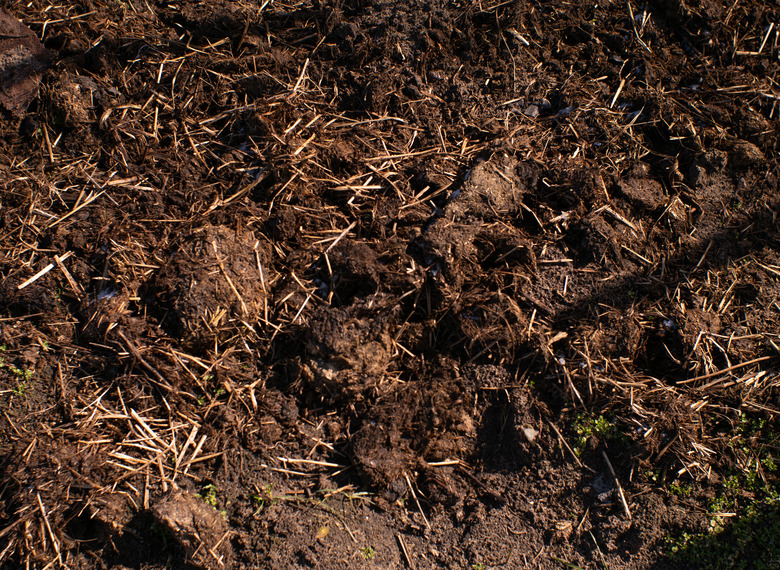How To Add Phosphorus To Soil For Your Best Garden Ever
Anyone who goes to the trouble of planting a garden hopes that their crops do well. But like kids, plants cannot thrive on love alone. Plants need many nutrients in order to thrive, but three are particularly important: nitrogen, potassium, and phosphorus.
Why is phosphorus important? Phosphorus is essential for developing flowers, fruits, and root systems. If your soil is low in phosphorus, your plants may have a phosphorus deficiency, which will prove a detriment to their growth. It's important to note that most non-agricultural soils contain enough phosphorus, with the exception of sandy soils; however, if a soil test indicates the need to add this element, you can use phosphorous as a fertilizer in your garden to help plant growth. Wondering how to add phosphorus to soil or what the purpose of fertilizer is? Here's everything you need to know.
What Are the Benefits of Phosphorus in the Garden?
What Are the Benefits of Phosphorus in the Garden?
You don't have to know all about fertilizers to understand the basic benefits of phosphorous. Any plant that produces blossoms or fruit requires an adequate supply of phosphorus. This nutrient is also critical to root growth. That's why phosphorous in the soil is particularly important for seedlings and young plants. This nutrient is essential for cell division, the development of new tissue, and the vitality of the growing tip of the plant.
In addition, phosphorus supports the nutrient uptake needed for plant cell and seed development, winter hardiness, and the efficient use of water. It is necessary for photosynthesis, helps the plant manufacture chlorophyll, and also assists with complex energy transformations in the plant. Fortunately, there are many sources of phosphorus for plants.
Why Should You Add Phosphorus to Your Soil?
Why Should You Add Phosphorus to Your Soil?
Most gardeners understand the basic purpose of fertilizer or even the importance of nitrogen in the soil, but what about phosphorus? Why is phosphorus important in the garden? The simple answer is that plants won't thrive without it.
When soil has a phosphorus deficiency, plant growth is slowed. Plants that grow in low-phosphorus soil will be stunted and spindly. Flower and fruit development will also be slowed.
It's impossible to diagnose a phosphorus deficiency without a soil test. However, there are a few indicative symptoms you can look for. The most common one is dull foliage with red pigment in the leaf bases and dying leaves. Other symptoms of phosphorus deficiency include weak stems, undersized fruits, and deformed blossoms. Note that plants deprived of phosphorus as seedlings may not recover when phosphorus is applied later. This is why using phosphorus as a fertilizer before planting is a good idea.
Where Does Phosphorus Come From?
Where Does Phosphorus Come From?
Phosphorus is a mineral found in nature, generally as phosphate ions. These are compounds that are part of sedimentary rocks. As the rocks erode over long periods of time, the phosphorus they contain leaches into surface water and soils. These compounds are also found in volcanic ash and mineral dust.
Phosphate compounds that have disintegrated into the soil can be taken up by plants to satisfy their nutrient needs. If these plants are consumed by animals, the phosphorus is passed to the animal. When these plants and animals die, the phosphate compounds are returned to the soil. If they are carried in surface runoff to rivers, lakes, and oceans, they are taken up by aquatic organisms, and over many centuries, this can form new sedimentary rock layers that can be "uplifted" to land.
Signs of a Phosphorus Deficiency
Signs of a Phosphorus Deficiency
It's impossible to detect a phosphorus deficiency without a soil test. If you want to try, here are the symptoms to look for, which may also point to diseases or other physiological disorders:
-
Dark coloration along the edge of the lower plant leaves, either red/purple or darker greenish-blue
-
Garden is performing poorly
-
Plants are spindly or weak
-
Dying leaves
-
Yellow, unthrifty plants
-
Flowers fail to mature
-
Seeds fail to develop
How to Test the Soil for Phosphorus Levels
How to Test the Soil for Phosphorus Levels
Testing for phosphorus in the soil is particularly important. That's because it is impossible to diagnose a deficiency from plant symptoms, because the same symptoms may have different causal agents. Soil testing is the best and most accurate way to determine whether your soil contains sufficient phosphorus to nurture your garden. Experts do not recommend an at-home DIY test. Rather, take your soil to a lab for testing.
There are numerous tests that are commonly used. Some common ones are Bray, Olsen, and Mehlich, some of which can be used in soils with a pH below 7.0, while others are best for high-pH soils.
- Bray tests: These have been used since the 1930s. The ideal level of phosphorus for the Bray-P1 test is 70 pounds per acre. The Bray-P2 test was developed to help with
application of rock phosphate as a fertilizer. - Mehlich 3 tests: These tests are read by ICP, which is a type of atomic absorption spectrometer. Some experts suggest that the Bray tests and Olsen tests are preferable.
- Olsen-P tests: Olsen-P is another type of test that is appropriate for acidic soils with a pH of 6.0, but it's best used for high-pH soils of 7.4 or greater.
Why do high-pH soils require a special test? It's because the calcium in high-pH soils can make it less
available for plant growth.
When to Add Phosphorus to the Garden
When to Add Phosphorus to the Garden
Phosphorus need not be added well in advance of planting. That is because it is available to plants quite quickly after being added to the soil. Typically, plants can use it within two to 14 days after soil amendment. Experts recommend that you wait until just before planting to add it, generally when the soil can be worked in early spring.
How to Add Phosphorus to the Soil
How to Add Phosphorus to the Soil
If you are wondering how to add phosphorus to soil, you'll have more than one option to get your plants phosphorus benefits. These are the best sources of phosphorus for plants.
High-Phosphorus Fertilizers
Some commercially available fertilizers are formulated with a high percentage of phosphorus. The key to finding a high-phosphorus fertilizer in the garden store is understanding the NPK formula written on the fertilizer label. This consists of three numbers that tell you what percentage of nitrogen, phosphorus, and potassium the fertilizer contains, respectively. You'll want to choose one with a higher middle number to get high phosphorus.
These products provide plants with quick nutrient uptake, but the effect doesn't last long — at a maximum, six months, which makes repeated use necessary.
A high-phosphorus-formula fertilizer can be liquid, granules, or a foliar spray. They are applied to garden plants according to the package directions. Granules are usually sprinkled over the soil and then watered or blended in. Liquids are usually diluted and applied directly to the soil at the base of the plants. Foliar sprays are applied to plant leaves. Although you may see foliar sprays at your garden center, this is not a viable option for boosting phosphorus levels. Foliar absorption of phosphorus cannot meet a plant's needs and does not travel systemically throughout a plant as root absorption does.
Since fertilizers contain chemicals, it is especially important to follow package directions in order to minimize environmental risk. Chemicals intended for one portion of the garden can move to wild areas nearby and contaminate them. They can also get washed into lakes or waterways and injure marine life.
Animal Manure
All types of animal manure can act to increase the phosphorus level in your soil, but chicken droppings and horse manure are two of the most common. Spread several inches of manure across the top of the soil and then work it into the soil with a trowel or gardening fork for a small plot or a rototiller for larger areas. This is a type of organic phosphorus that can be used as an alternative to synthetic chemical fertilizers containing phosphorous.
Using fresh manure around plants and crops can burn them, and it also contains pathogens. If you want to use fresh manure, spread it across the soil in autumn and then wait until spring to blend it into the soil. The safer choice for a vegetable garden is well-aged manure. Any manure, however, can alter the soil pH.
Fish Emulsion
Fish emulsion is an organic liquid fertilizer that is made from certain components of fish and fish products. It is a good source of both nitrogen and phosphorus, making it a highly desirable soil addition. This source of phosphorus for plants releases at a moderate to fast rate, providing them with a steady supply of phosphorus during the growing season.
Fish emulsions work best when applied to the soil instead of the foliage. Generally, instructions suggest mixing some 2 tablespoons of emulsion into a gallon of water and then applying it around the base of the plant. It is also possible to use the water to irrigate the garden plot.
Compost
Compost is decomposed organic material that can be used as a soil amendment that also adds some nutrients to the soil. You can buy compost premade at the garden store, but many gardeners make their own in a compost bin in the backyard. You can use organic compost to increase the phosphorus level of your soil, although most compost contributes only small amounts of this element and it's best used as a soil amendment instead of a fertilizer.
To use compost to add phosphorus to your soil, layer some 2 to 4 inches of organic compost and any other needed amendments or fertilizer over the topsoil of a garden plot. Blend it into the topsoil to a depth of 8 to 12 inches with a spade or gardening fork. For larger fields, use a rototiller to work in the compost. To maintain the nutrient level, incorporate 1 inch of compost into the soil on an annual basis.
Worm Castings
Vermicompost is a type of compost where the decomposition process uses earthworms to produce vermicast, also called worm castings, which is worm manure mixed with decomposing vegetable or food waste. It is an excellent, nutrient-rich, slow-release organic fertilizer that can be found at most garden centers. Although all earthworms produce vermicompost to benefit plant growth, red wigglers produce the most nutrient-rich castings.
Use worm castings like regular compost, layering it on top of the soil and then blending it in with a garden fork. Vermicompost not only adds phosphorus to your soil but it also frees up existing phosphorus for use by plants.
Lime
Lime won't add phosphorus to your soil, but it will help release the phosphorous already present. When soil has a low pH level, it is acidic. Acidic soil can bind phosphorus in a way that prevents your plants from using it. Adding garden lime, either calcitic or dolomitic, will balance out the pH closer to neutral and release phosphorus that was previously unavailable. You'll find these commercial products most tcommonly packaged as finely ground or pelletized forms.
Before you add any lime, submit a soil sample to your local county extension service for testing. You'll then receive a report that indicates how much lime needs to be added to your soil to correct the pH. Since lime can take six to 12 months to break down and change your soil pH, apply it in the fall with an eye to the next year's crop. Spread lime over the soil and then work it deep into the soil. Winter weather will break it down.
Rock Phosphate
Rock phosphate, also called phosphorite, is not the best environmental choice, but it does pack a phosphorus punch. It is found in rock sources, including shale, limestone, and sandstone, and when extracted, it can be used as an additive in phosphate fertilizers. Note that the soil microorganisms need to convert the rock phosphate into phosphorous that the plants can use. Commercially available products include dry and liquid rock phosphate fertilizers.
There is no getting around the bad news, which is that rock phosphate can have negative effects on the environment, especially near the water. The effects are so dangerous that these fertilizers are banned in certain areas. Another downside is that once this product has been applied, there is no way to reduce the amount of phosphorus that has bound to the soil. Excess phosphorus causes its own problems and impairs a plant's ability to absorb other minerals from the soil.
Bone Meal
Bone meal is made by steaming animal bones and then grinding them into a powder. It is a rich source of phosphorous with an approximate 15 percent phosphorus concentration, and it releases into the soil in short order. However, it has some downsides. It's best used in acidic soils (less than 7.0 pH). The bone smell can attract animals, and the product will raise the soil pH over time.
To apply, spread an inch or two of bone meal in a layer on top of your garden plot soil. Blend this in with a trowel or gardening fork. In the case of a large field, use a rototiller to blend the substance into the soil.
DIY vs. Commercial Phosphorus
DIY vs. Commercial Phosphorus
Commercially available high-phosphorus fertilizer will up the phosphorus available to your plants quite rapidly. They are easy to find and easy to use, and they act fast. But there are downsides. These fertilizers are synthetic, not organic. That means that the chemicals they contain often have a higher potential for damaging other plants, leaching into waterways, and injuring wildlife. But this doesn't mean that organic sources don't also have the potential for environmental damage. Any fertilizer or soil amendment should be used judiciously.
Many ecologically minded gardeners prefer to grow flowers, fruits, and vegetables using only organic materials — that is, those that are based on naturally occurring chemicals instead of synthetic materials — in an effort to minimize environmental damage. They prefer using organic fertilizers or soil amendments, including organic compost, bone meal, fish emulsion, or animal manure.
FAQ
FAQ
- What is the fastest way to increase phosphorus in soil?
High-phosphorus commercial synthetic fertilizer may be the fastest way to increase phosphorus in soil. The fastest organic method typically is fish emulsion, applied to the soil and not as a foliar spray. - What is a good source of phosphorus for plants?
Several organic sources are great for getting plants phosphorus. They include composted manure (with chicken and horse manure topping the list), bone meal, and fish emulsion applied to the soil. - Does Epsom salt contain phosphorus?
Do not use Epsom salt as a soil amendment. It doesn't
contain nitrogen, phosphorus, or potassium. - Do coffee grounds add phosphorus to soil?
Coffee grounds are a better soil amendment than Epsom salt. They contain some nitrogen
and potassium and a little phosphorus. - Do banana peels have phosphorus?
Banana peels are a good source of potassium, phosphorus, and calcium for garden soil. To use them to amend soil, bury them in the soil or toss them in the compost pile or bin first.


